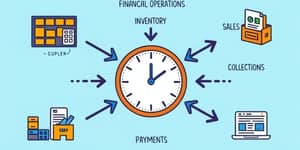
In 2025, understanding how to manage and optimize customer acquisition cost (CAC) has become an imperative for any rapidly expanding company. As competitive pressures escalate and digital channels become more saturated, high-growth firms must adopt cutting-edge strategies to maintain profitability and sustain momentum.
By examining the latest benchmarks, identifying core drivers of rising costs, and exploring actionable optimization techniques, this article will equip leaders with the insights needed to thrive in a landscape where customer acquisition costs have surged across nearly every sector.
Customer Acquisition Cost, commonly referred to as CAC, measures the total expense required to acquire a new customer during a specified period. It encompasses all spend on marketing, sales, and onboarding, divided by the number of new customers gained.
At its core, CAC reflects the efficiency of a company’s conversion efforts—it serves as a leading indicator of growth, profitability, and the scalability of acquisition programs. A well-managed CAC sets the foundation for sustainable expansion, ensuring that each dollar spent on acquisition drives long-term value.
Over the past five years, high-growth organizations have experienced a dramatic uptick in acquisition expenses. Several factors, including escalating ad costs and intensifying competition for consumer attention, have driven a roughly 60% rise in CAC overall. However, this impact varies significantly by industry.
Despite some sectors like eCommerce maintaining relatively low CAC, emerging categories—especially fintech and specialized B2B niches—face record-high acquisition expenses, challenging businesses to innovate constantly.
Several fundamental trends explain the upward trajectory of CAC in fast-moving markets:
These factors combine to create an environment where simply allocating more budget to acquisition is insufficient; strategic precision and innovation are essential to sustain healthy unit economics.
High-growth firms deploy meticulous tracking systems to ensure each marketing and sales dollar is contributing meaningfully to new customer acquisition. Key practices include:
By layering data from multiple sources—CRM platforms, analytics tools, and customer feedback loops—companies can diagnose underperforming campaigns, reallocate budgets, and optimize conversion paths.
Once firms understand their cost structure and drivers, they can employ targeted tactics to drive down CAC while maintaining growth:
By integrating these approaches, companies can systematically lower acquisition spend without sacrificing scale or market reach.
Managing CAC effectively is inseparable from maximizing Customer Lifetime Value (LTV). Leading firms target an LTV:CAC ratio between 4:1 and 10:1, ensuring that the value generated over a customer's lifespan significantly exceeds initial acquisition costs.
A shorter CAC payback period also enhances cash flow resilience. By recovering acquisition expenses more quickly, organizations free up capital to reinvest in growth initiatives, research, or product development. Combining high retention, upsell, and cross-sell programs with a healthy LTV:CAC ratio creates a virtuous cycle of profitability and scaling capability.
Looking ahead, customer acquisition costs are unlikely to retreat. As digital marketing saturation, privacy dynamics, and customer expectations continue to evolve, companies must stay agile and innovative.
Two emerging imperatives will define success in the coming years. First, delivering hyper-personalized, omnichannel experiences that differentiate brands in crowded marketplaces. Second, harnessing advanced data analytics and AI to drive granular campaign optimization with AI—reducing waste and improving ROI.
Ultimately, the firms that thrive will be those that view CAC not as a static line item but as a dynamic lever—continuously adjusted through experimentation, customer insights, and technology investments. By embracing this mindset, high-growth organizations can turn rising customer acquisition costs into opportunities for innovation, differentiation, and sustained success.
As you navigate your firm’s acquisition strategies in 2025, remember that every dollar spent is an investment in future expansion. Strive to measure, optimize, and elevate your approach to customer acquisition with both rigor and creativity, ensuring you stay ahead in an era defined by increasing complexity and cost pressures.
References













